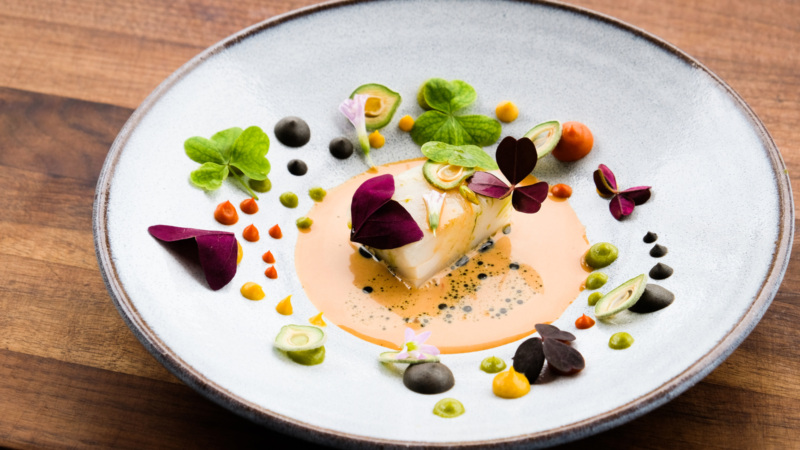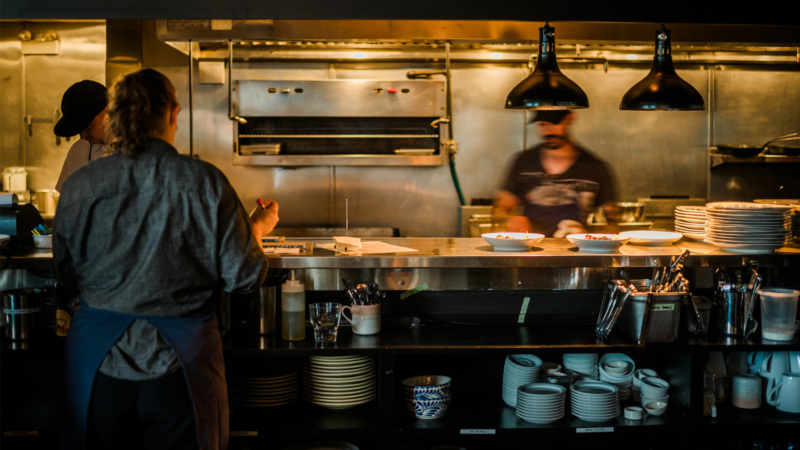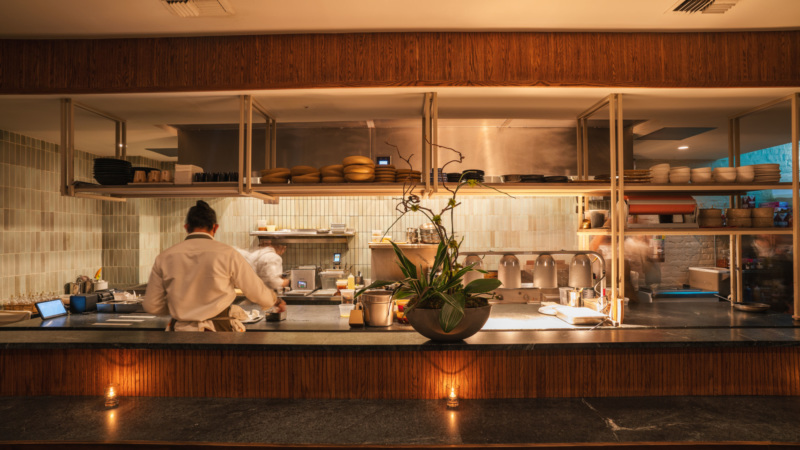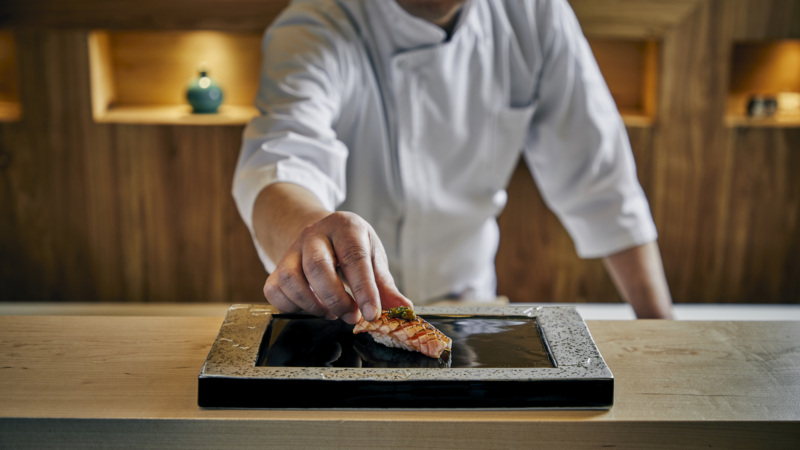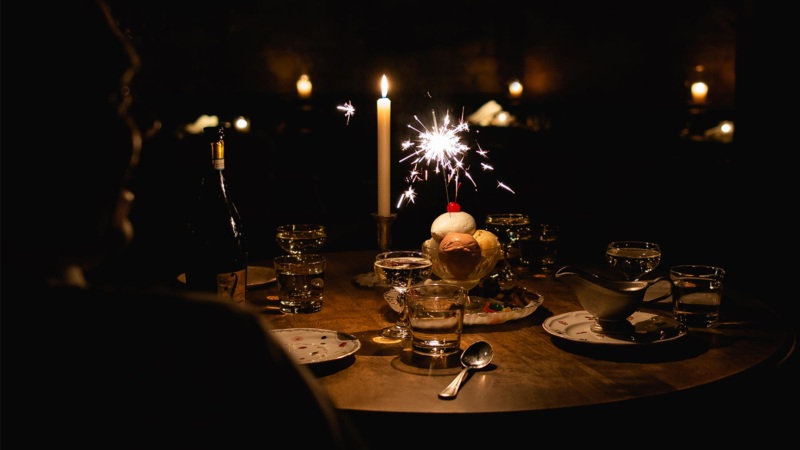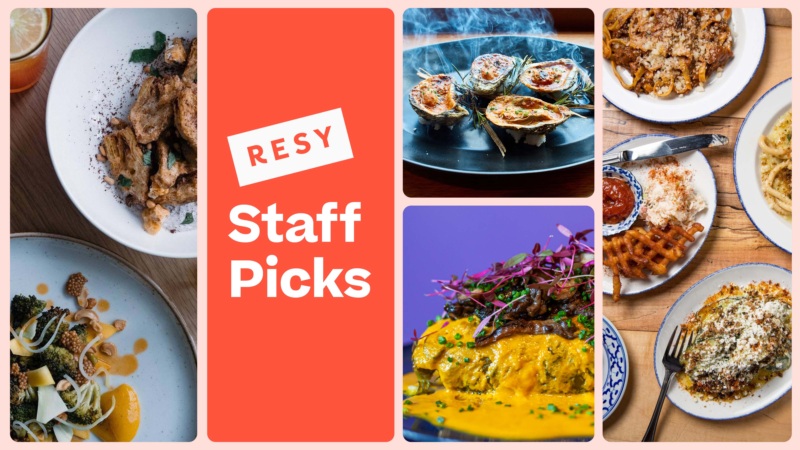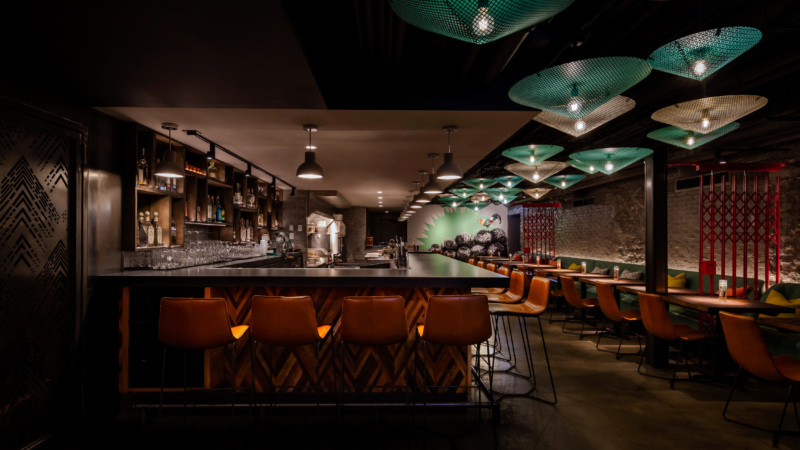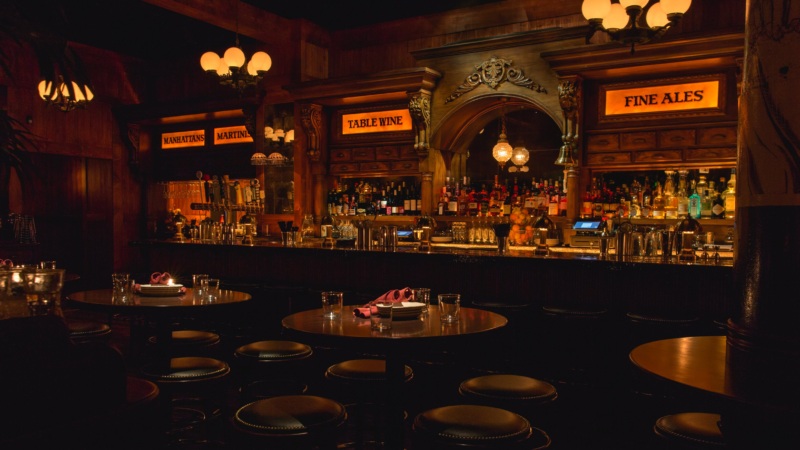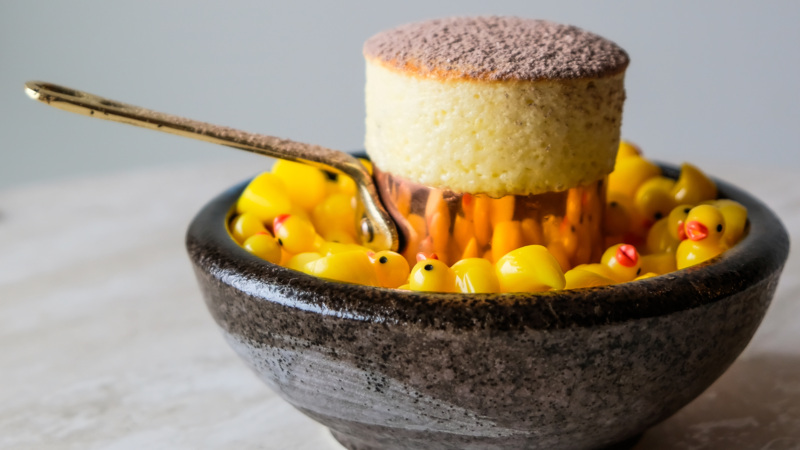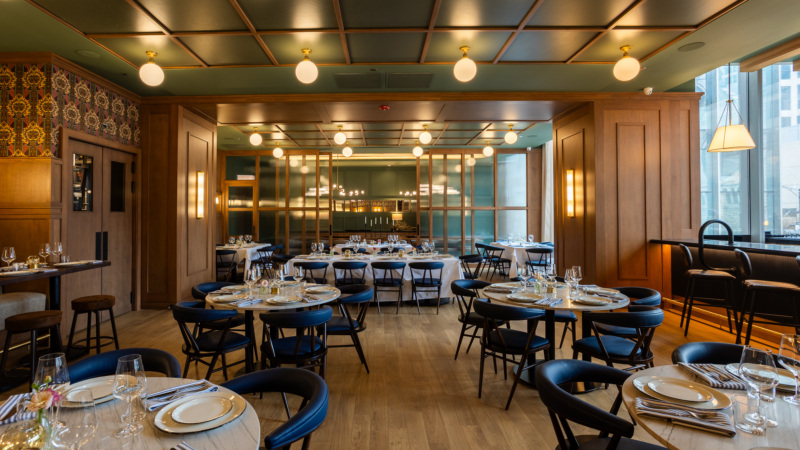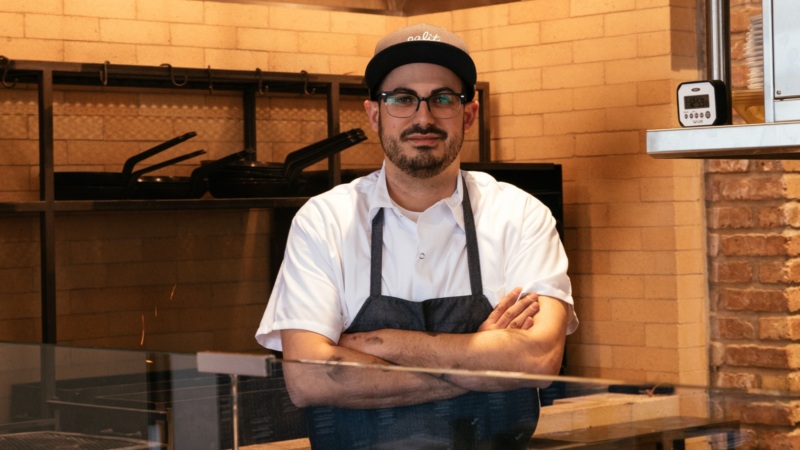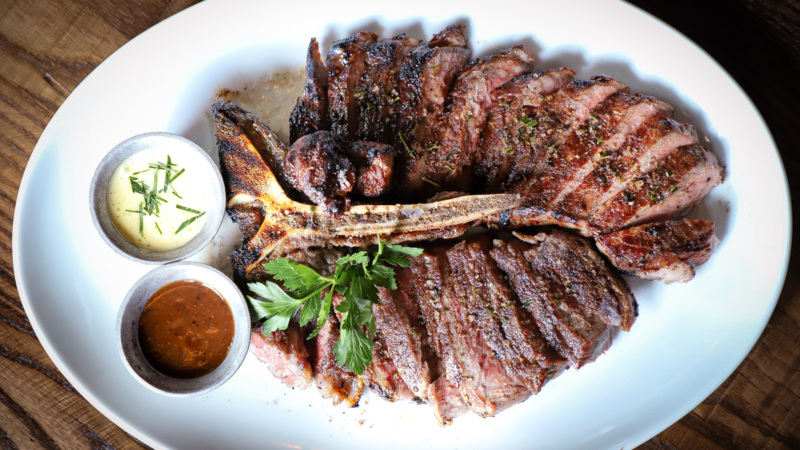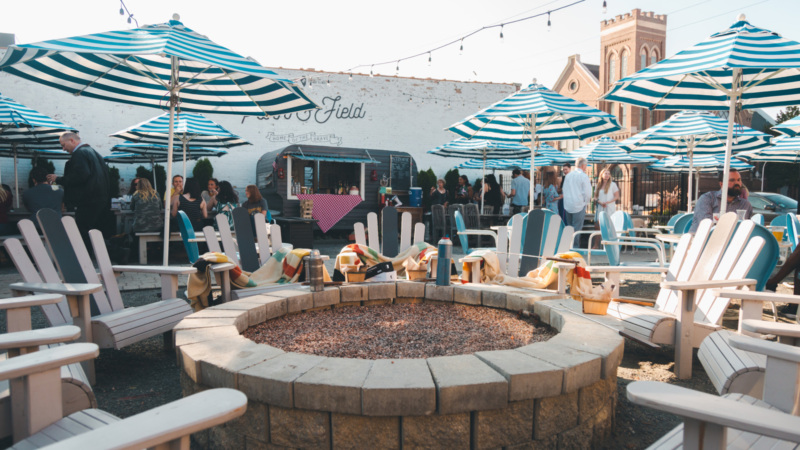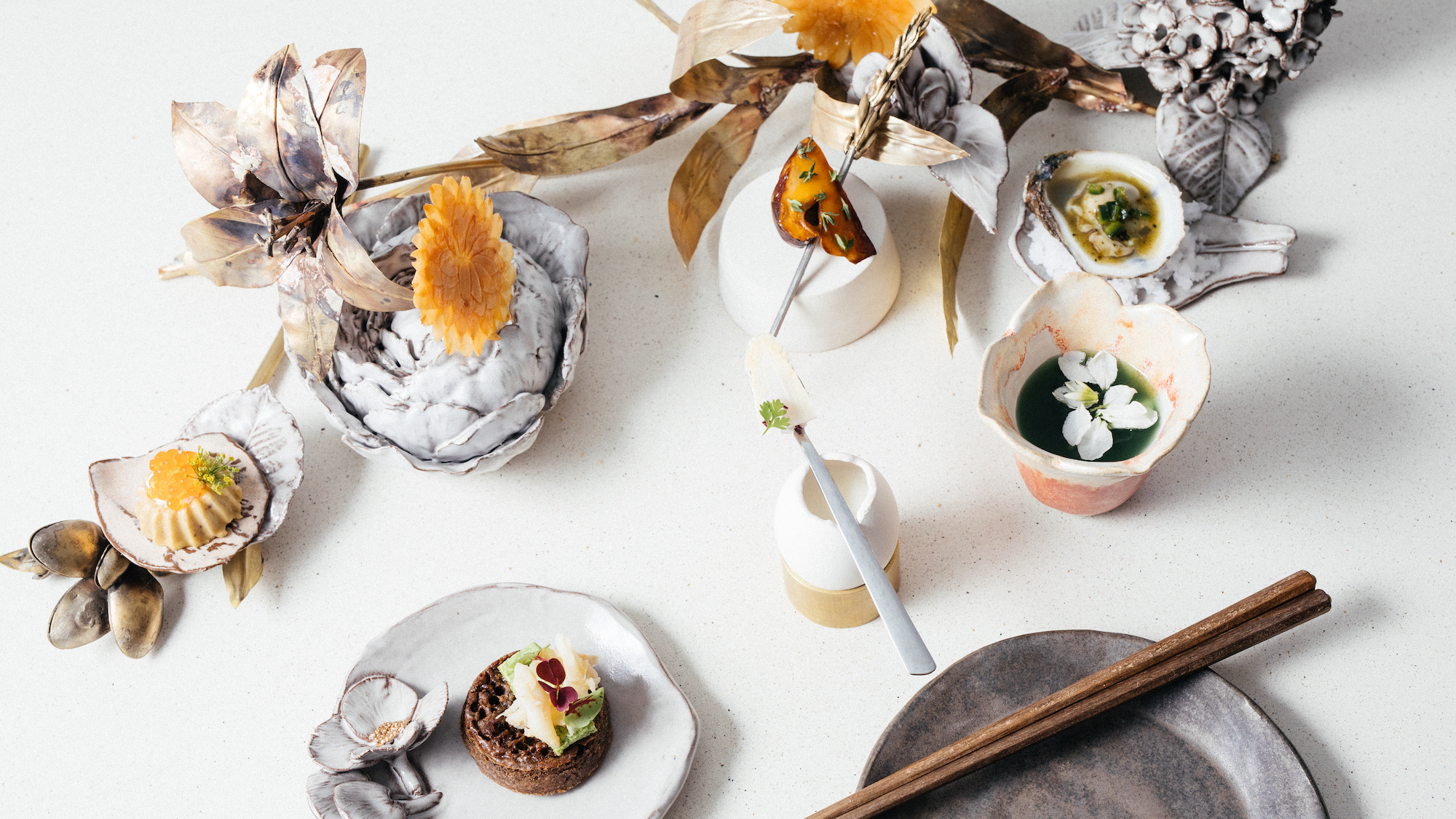
Five Things to Know About Esmé, Opening in Lincoln Park
Before you go to a restaurant, what do you want — or need — to know most? In our series The Rundown, we’re sharing all the essentials about newly opened (as well as some of your favorite) restaurants.
This time, we’re in Lincoln Park to get the scoop on Esmé, one of Chicago’s most-anticipated restaurant openings of the year, from husband-and-wife duo executive chef Jenner Tomaska and creative director Katrina Bravo.
Offering a $200-ish dozen-course tasting menu rooted in classical French cooking, Esmé is indeed a fine-dining restaurant on paper. But this ambitious project aims to be much more when it takes flight on Aug. 18 — from a creative and commercial platform for up-and-coming local artists to a community anchor with a philanthropic bent. Here’s everything you need to know about this new breed of tasting-menu restaurant.
1. Esmé is a love letter to the city of Chicago and (real) hospitality.
In an era that’s seen centuries of injustice and inequity bubble violently to the surface across communities and professional industries — exacerbated by a global pandemic and subsequent economic downturn — is it enough to open a restaurant that’s just about serving beautiful food? This question anchored every conversation Tomaska and Bravo had over the past few years as they planned their first solo restaurant, a dream of Tomaska’s since he first picked up a chef’s knife. The pandemic only hardened their resolve.
“That’s why we haven’t talked a lot about the food,” Tomaska says. “I’m confident we’ll put out well-seasoned, thoughtful and delicious food, but it’s not necessarily about the food; it’s about using the food to showcase and give name and note to what others are contributing in positive ways. Does the world need another tasting menu? I don’t know. But that’s what we know. ”
For the couple, who also just welcomed their first child, taking the ownership reins means providing fair wages and access to the same resources corporate America provides its workers, down to resume-building. It means using their physical space, and social media platforms (and following) to help budding artists of color market and sell their work, and routinely giving time and money to like-minded community organizations.
“We’ve been given platforms and opportunities, we’ve been fortunate, let’s take some of that and give it to others,” adds Bravo, who worked at Ada Street before joining the marketing department of the Alinea Group.
Both credit their mentor, Erick Williams, chef and owner of Virtue in Hyde Park, with instilling a desire to build an empathetic workplace and reinvest in their communities. The couple met while working at now-closed mk while Williams was the executive chef.
Esmé’s namesake is the daughter of close friends of Bravo’s; it popped into her head while the duo were searching for restaurant names. “Unbeknownst to me, it also means ‘beloved’ or ‘beloved one’ in French,” she says. “That was it, that was the name. It’s our love letter to the city and to an industry that has helped us both tremendously.”
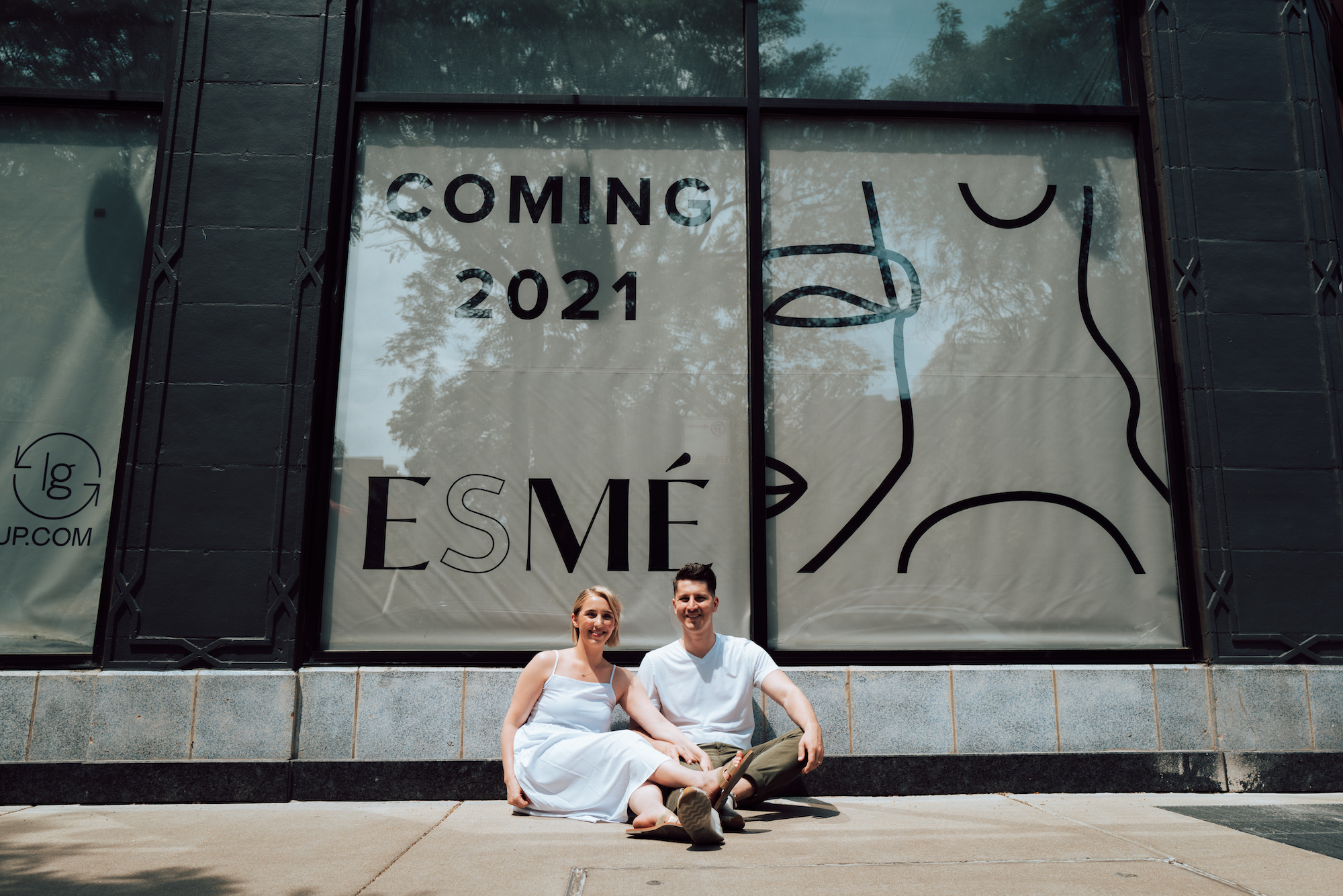

2. Art and philanthropy will tie in at the restaurant.
Starting likely in October, they’ll offer collaboration dinners throughout the year featuring inspiring local figures, with portions of the proceeds going to different charities. Possible partners include local nonprofit Kitchen Possible, which offers cooking classes to kids in underserved neighborhoods. They will also showcase up-and-coming artists by displaying their work and making it easy for diners to buy it — whether through exhibitions dotting the dining room walls or custom wallpaper providing the bar backdrop, like an opening piece from abstract artist Amanda Rivera aka @raspyrivera.
“We basically are saying, come use the restaurant as a gallery, come collaborate with Jenner,” Bravo says. “We’ll run press around your name, put your business cards behind the bar. We’ll support your causes, like [Black queer photographer] Paul Octavious [who created the black-and-white film on Esmé’s home page and will be part of an upcoming dinner collaboration], who started the Black Archivist project [which provides equipment to up-and-coming Black photographers]. Or if you just want help with a jumping-off point, that’s what we want to do.”
3. The space is a (mostly) blank canvas.
Knowing they’d be showcasing rotating pieces on the walls, floor and even tables, the couple tapped architects Harley Ellis Devereaux (Bravo’s aunt and uncle’s firm) to create something of a blank canvas.
The 40-seat dining room features muted colors, lots of concrete and a mixture of hard and soft surfaces and edges — outlined with floor-to-ceiling windows to lighten it and maintain a connection to the neighborhood outside. At the front of the restaurant, a spacious standing room-only area mimics a gallery space — with an artist-designed Champagne tower as the focal point.
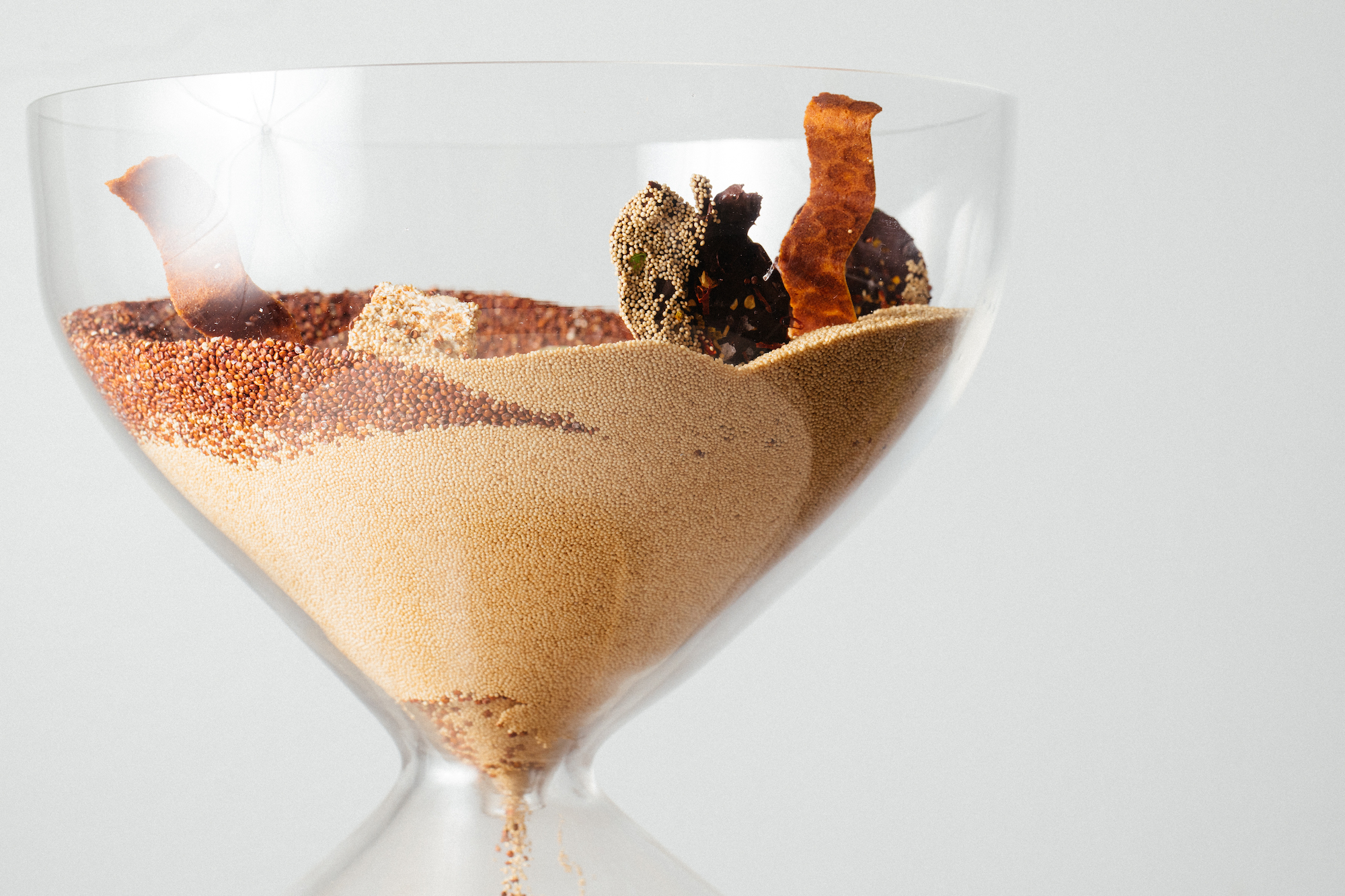
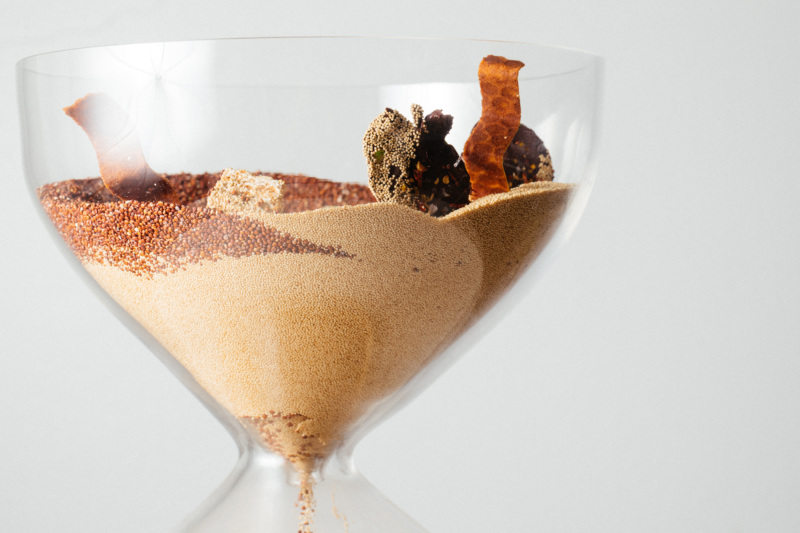
4. French food will anchor the menu, but in a conceptual, creative format.
One of the city’s most celebrated young chefs, Tomaska might be best known for his work at Next, where he was twice a finalist for the James Beard Foundation’s Rising Star Chef award. He left abruptly in 2018 and did a stint running Iliana Regan’s kitchen at Elizabeth.
His love of classical French technique will anchor the 12- to 15-course tasting menu, which will start with canapes in ascending sizes, and ebb and flow into raw and cooked shellfish, a first and second protein, salad then dessert. But the chef with “culinary ADD,” as Bravo affectionately puts it, is looking to the artists around him as creative engines.
“I like confinement and constraint in the creative realm; I don’t like a blank canvas,” Tomaska says. “I follow the overall ethos of being inspired by someone else and their creative processes, so the menu really starts there.”
Take his wagyu gougère. Titled “The Lips,” it’s served on a folded stainless steel “plate” by paper sculpturist Polly Verity. Moved by Verity’s paper sculptures featuring noses and lips, which reminded him of old black-and-white films, Tomaska asked if Verity could curate something using a cleanable vessel.
“The dish is a classic gougère, but rather than looking like an organic puff, we bake it in a mold so it’s a perfect sphere,” he says. “It’s topped with parsnip purée, salted strawberry and spruce leaves then placed on the lips. When you pick it up, you experience how I was inspired by her work.”
Other opening courses include a carrot dauphine canapé with rye-spiced ricotta and smoked trout roe; osetra caviar with sweet potato ice cream, peanut miso caramel and celery hot sauce; pierogi with raclette, burnt onion consommé and truffle; and salmon with spring peas stewed in “ranch” whey with green tomato packets and bitter greens.
The 16-seat bar promises to be a more accessible affair, where “lively,” yet-to-be revealed plates at lower price points will accompany a small, seasonal cocktail menu from beverage manager Tia Barrett, who previously worked at the Aviary and the Office.
“Tia will always have five cocktails on the menu, but she also wants to get to know people,” Bravo says. “The bar is an opportunity for her to explore with you, maybe push you into something new, and craft something personalized. It’s all about connecting. That’s one of the main reasons we wanted a bar to begin with.”
5. Barrett’s beverage list will highlight producers of color and philanthropic women.
Barrett brings a like-minded ethos to the beverage side of Esmé; everything from the 50-bottle wine list to liquor to water will showcase producers of color, and women producers with a philanthropic tie.
That’s not to say classic wines won’t have a place; rather, the team sees the drinks menu as another opportunity to bring light to yet-unheard, deserving voices. Opening wine bottles include Michael Lavelle Iris rosé, which is made by four men of color from Chicago, and Ricochet Grüner Veltliner from Oregon, which donates 5% of sales to nonprofits.
“It’s not just about showcasing first-growth Bordeaux,” Tomaska says. “It’s not about preconceived notions of what quality wine is. As with everything else here, we’re attempting to be more thoughtful.”
Maggie Hennessy is a Chicago-based freelance food and drink journalist, and the former restaurant critic for Time Out Chicago. Her work has appeared in such publications as Bon Appetit, Food & Wine, Taste, Eater and Food52. Follow her on Instagram and Twitter. Follow Resy, too.


